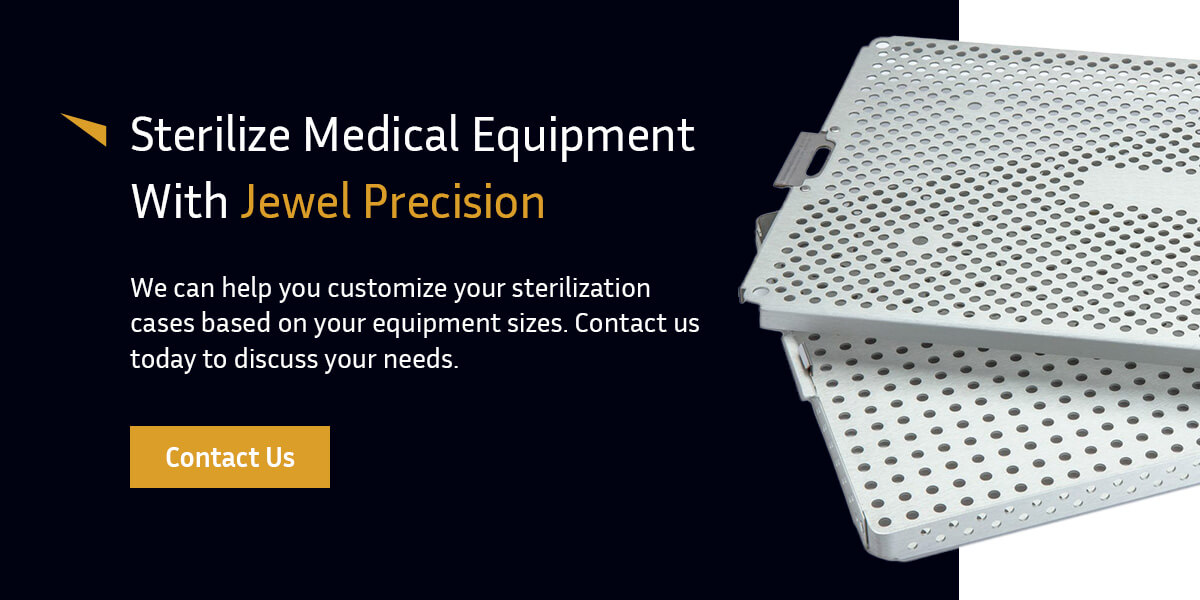The health care setting needs to be as germ-free as possible to reduce the risk of infection and prevent the spread of disease. Otherwise, medical tools such as surgical equipment can potentially introduce infectious microbes to patients.
Sterilization is the process of destroying microbes by using either heat, gas or chemicals. Several types of sterilization exist:
- Ethylene oxide sterilization
- Dry heat sterilization
- Steam sterilization
Each method has its use in a medical setting. Learn more about the different types of sterilizers, their benefits and drawbacks, and when it makes sense to use each.
Steam Sterilization: What Every Sterilization Technician Should Know
During steam sterilization, or autoclaving, a technician places medical instruments into an autoclave, which is a pressurized steel chamber. The pressure in the chamber produces the high temperatures needed to kill microbes. For best results and effective sterilization, objects in the autoclave must be heated to a temperature of 120 degrees for at least 30 minutes.
Autoclaving has several benefits. Since it relies on heat and steam to kill microbes, it is nontoxic and won’t potentially expose people to dangerous chemicals. The process is also fast, taking 30 minutes.
Using steam may not be the sterilization method of choice for every project, however. Instruments and equipment that are heat sensitive can easily be destroyed by exposure to temperatures above 100 degrees Celsius. Since it produces a wet heat, steam sterilization also isn’t ideal for use with tools that can be damaged by water.
Ethylene Oxide Sterilization: Its Role and Importance in the Medical Field
Medical devices that can be damaged by heat or moisture exposure can be sterilized using ethylene oxide (ETO), a flammable, explosive and colorless gas. The ETO gas sterilization process requires four parameters:
- A gas concentration between 450 and 1,200 mg/l
- Temperatures between 37 and 63 degrees Celsius
- Relative humidity between 40 and 80%
- An exposure time between 1 and 6 hours
The primary benefit of ETO sterilization is that it kills microbes without the need for high heat. The method isn’t without its drawbacks, however. Notably, it takes a considerable amount of time to complete. After the initial sterilization process, aeration is required to remove traces of the gas from the instruments or equipment and to reduce the risk of exposure.
Another disadvantage of ETO gas is its toxicity. Exposure to the gas sterilizer can cause dizziness, eye pain, trouble breathing and coughing. It’s also a carcinogen and has been linked to miscarriage, muscle weakness and nerve damage.
Ethylene oxide sterilization equipment is still relatively common in the medical field and half of all medical devices in the U.S. are sterilized using the gas.
Dry Heat Sterilization: An In-Depth Look for Researchers
Dry heat sterilization is the process of heating medical instruments to a high temperature and letting the heat kill any microbes. Since it doesn’t involve steam or pressure, the process typically requires higher temperatures, usually between 150 and 170 degrees Celsius. The time required varies based on the temperature. At 170 degrees Celsius, sterilization can occur within 60 minutes. At 150 degrees, the process takes 150 minutes.
While dry heat takes longer than steam to sterilize materials, it is suitable for use with materials that would corrode when exposed to moist conditions, such as metals.
Evaluating the Risks and Benefits of Each Sterilization Method
Whether steam, dry heat or ethylene oxide is the right sterilization method depends largely on the objects you need to clean. Steam works quickly but can damage delicate, heat- or moisture-sensitive equipment. ETO gas takes a long time to work but effectively sterilizes equipment that can’t be exposed to heat or moisture. It also works well with equipment that has hard-to-reach areas, such as catheters.
Dry heat sterilization is the middle ground. It takes longer than steam but can be appropriate when sterilizing equipment that can be damaged by moisture.
No one method of sterilization is better than the rest, as each one kills microbes and sanitizes equipment effectively. It’s a matter of choosing the method that’s most appropriate for the instruments and equipment you are using.
Sterilize Medical Equipment With Jewel Precision
Whether you use steam, dry heat or ETO for medical sterilization, you need the right equipment. Jewel Precision develops sterilization containers designed for use with autoclave equipment. We can help you customize your sterilization cases based on your equipment sizes. Contact us today to discuss your needs and learn more about our products.
